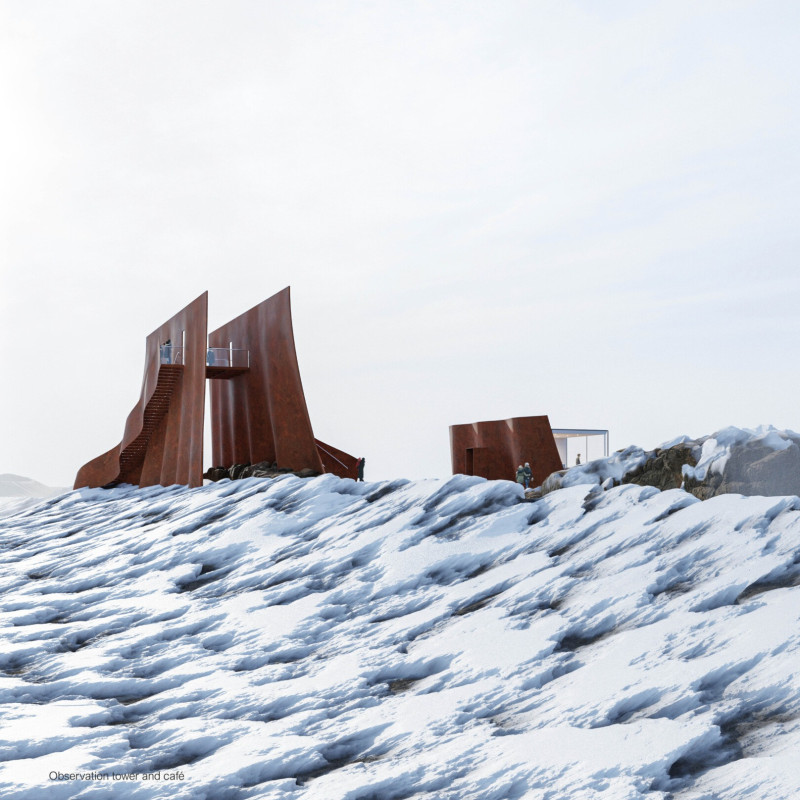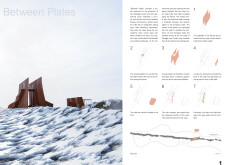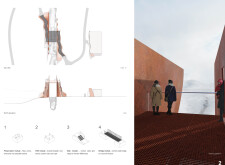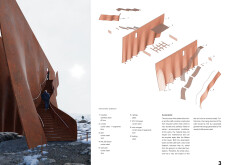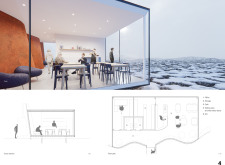5 key facts about this project
"Between Plates" is located at the Grjótagjá caves, where the fissure between the tectonic plates of Europe and America creates a unique geological landscape. The design focuses on enhancing the visitor experience while exploring the geothermal pools and surrounding nature. A circular pathway weaves through the site, leading to a café and waiting area that invite interaction with both the architecture and the environment.
Circular Pathway
The centerpiece of the design is a circular pathway that guides visitors through a series of engaging experiences. As they walk, they are encouraged to explore while staying connected to the stunning natural surroundings. The café, combined with the waiting area, offers a place for visitors to pause and enjoy the views, enriching their overall experience as they take in the geological features surrounding them.
Corten Steel Walls
Two large corten steel walls are key elements of the design. These walls extend from the fissure's sidewalls, creating a strong visual presence in the landscape. They not only provide structural support but also frame views, enhancing the way visitors perceive the environment. As people walk through the space between the walls, they are led to focus on the geological features beyond. The names of the tectonic plates are etched into the walls, adding an educational aspect to the visit.
Sustainability and Minimal Impact
Sustainability is an important consideration in the design. Both the observation tower and the café are raised on steel pile foundations, which help minimize their impact on the natural landscape. The use of recycled corten steel is a practical choice that aligns with environmentally friendly practices. Additionally, energy for the café is intended to come from geothermal sources provided by the nearby Krafla power plant, highlighting a commitment to sustainable energy use.
One notable design feature is the wave pattern incorporated into the base of each corten steel wall. This detail adds visual interest while also contributing to the structural integrity of the walls. Overall, the design emphasizes a connection to the geological context, encouraging visitors to appreciate the natural processes that shape this landscape.


